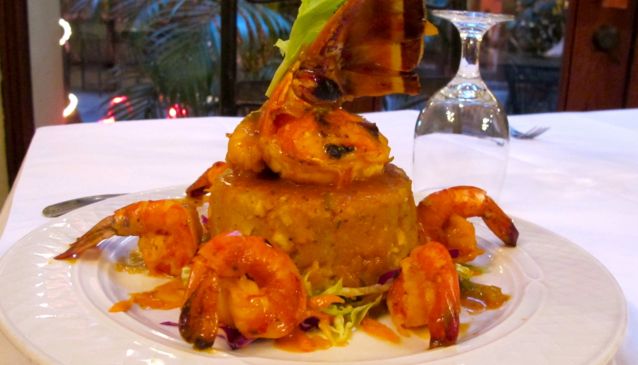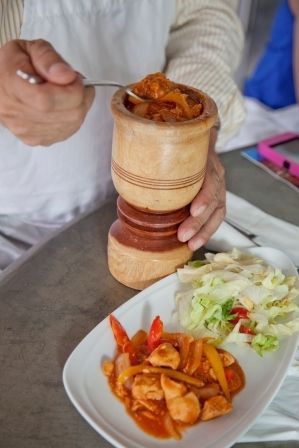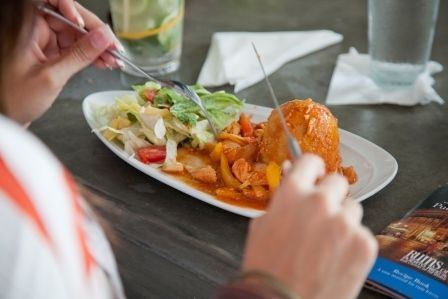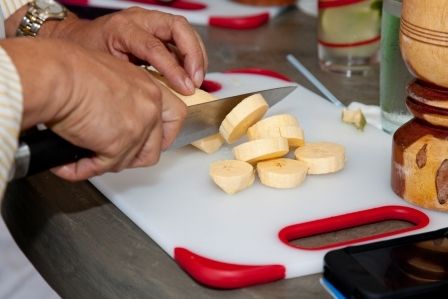Puerto Rico's rich and unique culinary heritage links back to three main influences.

The first thing that spring to mind when a traveler imagines Puerto Rico might be its miles of sandy beaches cupped by crystal clear water, or the deep amber flavor of its legendary rum, but to those lucky travelers who have actually been to Puerto Rico, many remember its culinary attributes long after their mofongo and pina colada have passed their lips.
Puerto Rico's rich and unique culinary heritage links back to three main influences: Spanish, native tribes to the island and Western Africans. The Spaniards, whose ships first lapped the shores of this 'Island of Enchantment' in the early 1500s, eventually would bring with them such currently 'typical' foods as mangos, avocados and even the ever present plantain to the table. Prior to the Spanish infiltration, the natives dined on everything sea related - shrimp, crab, fish and smaller Caribbean lobsters as well as root vegetables such as calabaza, yuca and yautia. In modern times visitors will easily find root vegetables prepared in any manner of ways: mangos, avocados, pineapples, plantains and guayaba; a mish mash of items consumed by the natives and foods introduced by the Spanish. The way in which Puerto Rican foods are typically prepared is by frying them. This method was introduced during the slave trade by the influx of Western African residences on the island. These three influences are what makes the island's cuisine so unique and so memorable.

Mofongo and Pilón
Once it hits your lips you can't stop
You might find, as many do, on some level it really is addictive to eat a great appetizer of tostones (twice fried garlicky green plantains) paired with the local sauce 'mayo ketchup' (garlic, mayonnaise and ketchup -- trust us it is good!) and that, upon returning to your home town, you go through a sort of Puerto Rican food withdrawal. In efforts to quell that reaction, local company Flavors of San Juan Food and Culture Tours has created cooking classes for visitors (or really anyone) who wants to learn how to prepare traditional Puerto Rican dishes so when they return home they can recreate their Puerto Rican vacation at home (at least the food portion of it). Not everyone grew up with a Puerto Rican mother stewing rice and beans or flattening plantains to make tostones in the kitchen for dinner, but that doesn't mean you can't make your mofongo and eat it too! With this class visitors will learn first-hand from a local professional chef how to make staple dishes such as mofongo, mojitos and more.
Classes are booked upon demand by calling 787-964-2447 or emailing [email protected].

Mofongo is served
As a parting gift, so to speak, we leave you with this simple yet tasty mofongo recipe straight from our chef, Francis Sosa.
MOFONGO
INGREDIENTS (2-4 servings)
1) 4 firm green plantains
2) Thyme
3) 1/2 pound pork cracklings
4) 1/2 cup chicken stock
5) Salt and pepper to taste
6) 2 garlic cloves, peeled and crushed
7) Pilon and mortar
8) Vegetable oil for frying
DIRECTIONS
CHICKEN IN CRIOLLO SAUCE (topping for mofongo):
INGREDIENTS (2-4 servings)
1. 4 Chicken breasts (no skin, no bones)
2. 1 onion
3. 1 yellow pepper
4. 1 green pepper
5. 8 oz. tomato sauce
6. 4 oz. tomato paste
7. 2 cloves garlic
8. 1 pinch oregano
9. 1 spoonful of sofrito*
10. 2 teaspoons salt
11. 1 teaspoon black pepper
12. Pinch of fresh cilantro
DIRECTIONS:
*Sofrito is mixture of garlic, onions, tomatoes, culantro, sweet peppers cooked in annato oil.

Cutting green plantain
Leslie Padro is a writer (formerly with CNN) and founder and operator of Puerto Rico’s premier culinary tour company Flavors of San Juan Food & Culture Tours. Contact info: info@flavorsofsanjuan.